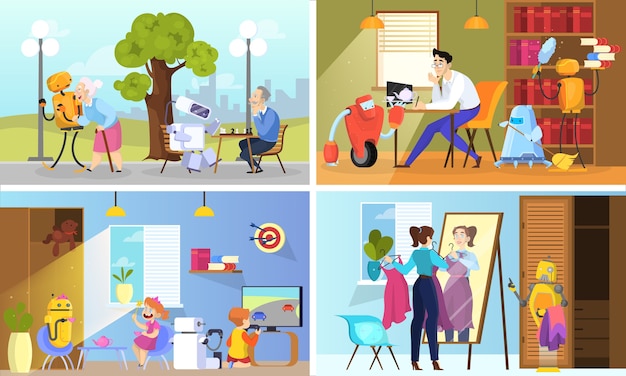Jobs And Crime Reduction: Understanding the Connection’ There is no question that jobs and crime are two of the most important issues facing our society today. Too often, both problems are linked together, with people who find themselves in low-paying or unstable jobs often resorting to crime as a way to make ends meet.
In this article, we’re going to take a closer look at the connection between jobs and crime, and see what we can do to reduce both problems in a meaningful way. We’ll start by looking at the root causes of both problems, and then move on to discussing some effective measures that we can take to reduce crime and help struggling families find stable employment.
Ultimately, jobs and crime reduction are a two-way street. If we can help struggling families find stable employment, it will go a long way in reducing crime rates. On the other hand, if we can improve the economy so that more jobs are available, that will also reduce crime rates.
Understanding the connection between jobs and crime is a critical first step in fixing either problem.
Jobs And Crime Reduction: Understanding the Connection
What Is The Connection Between Jobs And Crime?
There is a clear connection between jobs and crime. In fact, one study found that for every 1 per cent increase in the number of jobs in an area, there was a 0.5 per cent decrease in the number of crimes committed. This is because when people have stable employment, they are more likely to stay out of trouble and avoid criminal behaviour.
Another reason why jobs are linked to crime is that crime can lead to joblessness. For example, if someone gets arrested for a crime, it could mean they lose their job and become homeless. Or, if someone is a victim of a crime, their ability to find work may be affected.
ALSO READ: Reforming The Criminal Justice System: A Key Strategy For Reducing Crime

Overall, it’s clear that having more jobs decreases the likelihood of committing crimes and helps reduce the overall level of violence in an area. So what can governments do to encourage this trend? There are a few things that can be done:
Provide incentives for businesses to expand or create new jobs in an area. This can include tax breaks or other financial assistance.
Create programs that help unemployed individuals find new employment. This includes providing training and support services as well as helping them find new employers.
Increase funding for social welfare programs (like unemployment insurance) which can help low-income families maintain their stability and keep them from turning to crime as a way to survive.
Overall, job creation is a key factor in reducing crime rates and improving the quality of life for residents in an area.
How Can Jobs Reduce Crime?
There is a long-standing relationship between jobs and crime. The more people who have jobs, the less likely they are to commit crimes. This is because having a job gives people opportunities to learn new skills and find stable, honest employment. It also gives them money to spend and supports their families.
Studies have shown that unemployment rates are linked to increases in violent crime rates. When people can’t find jobs, they may turn to crime as an alternative means of earning income. In addition, research has found that hiring ex-offenders can reduce crime rates in areas where those individuals have been convicted of a felony.
There are many ways that businesses can reduce crime by hiring criminals. By providing ex-offenders with jobs, companies are doing their part in reducing the number of criminals on the street and improving community safety.
Some other effective ways to reduce crime through the employment process include:
1. Hiring employees who are enthusiastic and knowledgeable about the company’s products or services.
2. Focusing on recruiting talented employees who will excel in the company’s culture and work environment.
3. Offering competitive wages and benefits, including good 401k plans and health insurance.
4. Providing training and development opportunities for employees, so that they can grow and learn new skills.
5. Encouraging employees to participate in company volunteer programs or charitable work.
What Is The Economic Impact Of Crime?
Crime is costly, both to victims and to society as a whole. The economic impact of crime can be broadly categorized into three categories: direct costs, such as property damage or medical bills; indirect costs, such as lost productivity or decreased quality of life; and public safety costs, which include law enforcement and prison expenses.
Direct Costs
The direct costs of crime can include the value of personal possessions that are damaged or looted, the cost of medical services provided to victims, and the time spent by police officers investigating and prosecuting crimes. In 2006, the average cost per victim of a violent crime was $1,500, while the average cost per victim of a property crime was $2,200. The total cost associated with violent crimes amounted to $46 billion that year, while the total cost associated with property crimes amounted to $148 billion.
Indirect Costs
Indirect costs include lost productivity due to the criminal activity being stopped in its tracks (for example, when businesses are robbed), decreased quality of life due to increased fear or anxiety among residents (for example, when children cannot go outside after dark), and Social Security benefits that are reduced because criminals are prematurely claiming retirement benefits. Indirect costs associated with a crime can amount to as much as 50 per cent of its total economic impact.
The public safety costs incurred by law enforcement agencies alone account for about 30 per cent of all law enforcement spending in the United States. These spending levels have remained relatively stable over the past several decades despite
Conclusion
It is now widely accepted that jobs and crime reduction are deeply connected. Indeed, research indicates that where there are high levels of employment, both violent and property crimes tend to be lower. Conversely, where there is a greater percentage of people who are jobless or unemployed, crime rates often increase. This means that if you want to reduce crime in your community, it is important to think about how best to create more jobs.
READ: The Dark Side of True Crime: A Comprehensive Guide
Hopefully this article has given you a better understanding of the connection between jobs and crime reduction and has shown you some ways in which you can help support the local economy while also reducing criminal activity. If you have any questions or would like to discuss what steps your community could take to create more jobs, don’t hesitate to get in touch!

